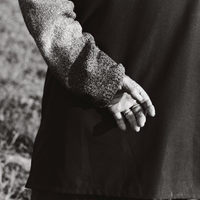|
Other Location

Jutka RONA
Survivors
On view: November 20 – December 5, 2014
Location: Balassi Intézet Bruxelles, 1000 Bruxelles, Treurenberg 10.
Curator: Gabriella CSIZEK
MANÉGE
A basic role of photography is to make us remember – not only the things we would like to cherish but also what we would like to forget.
With Jutka Rona’s exhibition Survivors the Hungarian House of Photography – Mai Manó House remembers and commemorates the Roma Holocaust. We exhibit a series the strength of which lies in portraying everyday matters objectively. The photographs are core statements, which convey messages beyond those displayed on them; they talk about all of us, making one person’s story a common one. As they seemingly take no particular aspect, they become shattering as it could be any of our grandparents on the images. And while we know we know that those are not our grandparents, we also are aware of them having been affected by the situations: they were neighbors, elders with old photographs, grandparents having lunch with their grandchildren, and so on. Take a look at these photos as it is our task to know our forgotten, common stories.
Hiding out at a Dutch famer’s family, the photographer Jutka Rona survived the persecution of the European Holocaust as a child of Jewish émigré parents. Today she lives in the Netherlands.
She developed the desire to commemorate the Holocaust of the Hungarian Romas when she visited an exhibition at the Holocaust Documentation Center in Budapest, Hungary in 2006.
In 2010, the publication fulfilling Jutka Rona’s commitment was published in the Netherlands. The album portrays Roma survivors in their own environment, often in the company of their family members; it also contains interviews, unveiling their individual destinies.
In her introduction to the album, Zsuzsa Ferge sociologist claims that there Romas in Hungary are largely excluded from society; as such the mainstream society has deliberately avoided to confront with this grim chapter of Hungarian history. Processing of this slice of Roma past is obviously not aided by the fact that the Hungarian gypsies have lived in severe poverty for a long time.
In 2011, the Hungarian Napvilág Publisher released the bilingual, Hungarian-English version of the album Hungarian Romas – Survivors’ stories. It is as much of a memento as it is homage to the Hungarian Roma Holocaust. By showing the everyday life of survivors, it evokes a forgotten but true tragedy in Hungarian history in a very particular way.
Gabriella Csizek

|
Hungarian House of Photography in Mai Manó House
H-1065 Budapest-Terézváros, Nagymező utca 20.
Telephone: 473-2666
Fax: 473-2662
E-mail: maimano@maimano.hu
|
|
|


